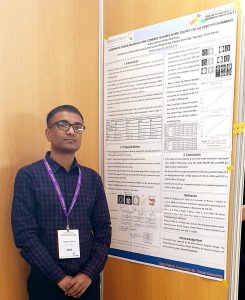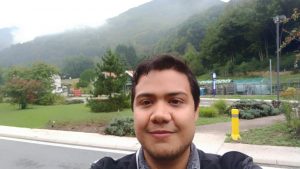The IMAGE-IN: Imaging infections – integrated multiscale visualization of infections and host response program has launched!
Infectious diseases are caused by organisms, usually microscopic in size, such as bacteria, viruses, fungi, or parasites that are passed from one person to another. They are a leading cause of death worldwide.
To help reduce worldwide mortality, the European training network IMAGE-IN aims to educate a new generation of leading experts in advanced imaging and data analysis methods. It will provide insights into molecular imaging, multiscale visualisation of infections and host response to help detect infection and its cause, and determine its severity for personalised treatment. The focus will be on combining data from different imaging modalities to better understand the pathogenesis of difficult-to-treat infections.
In this program, coordinated by the Leibniz-Institut für Photonische Technologien e.V. and BMD Software, we have welcomed two new members to our team, to conduct research on the following topics:
In this context, we have welcomed two new members to our team, to conduct research on the following topics:
- 3D visualization and correlation from different spectroscopic imaging modalities to define the pathogen niche;
- Collaborative Research Framework for Pathomics.
 3D visualization and correlation from different spectroscopic imaging modalities to define the pathogen niche
3D visualization and correlation from different spectroscopic imaging modalities to define the pathogen niche
We aim in developing improved data analysis algorithms for the 3D visualization of infected cells using 3D image stacks.
For that goal, we will explore combined spectroscopic data sets consisting of fluorescence images, hyperspectral Raman images, realtime intra-vital multimodal imaging (CARS, TPF, FLIM, SHG) and FIB-SEM of infected cells from controlled in-vitro experiments.
This work will be carried out by Yubraj Gupta (on the left). Yubraj has been in Aveiro, Portugal, since July 2020.
Yubraj is 28 years old and he is from Nepal. He has spent his past few years in Gwangju, South Korea, conducting research in medical imaging analysis, with a focus on imaging related to brain science (especially Alzheimer’s disease) using the latest machine and deep learning techniques at Digital Media computing lab in Chosun University. At this institution, he has also accomplished a master’s degree in Information and Communication Engineering.
When asked about his expectations for this project, Yubraj claimed that it sounds challenging, since he is a “PhD newbie”, but that he wishes to achieve his goal within the timeline. Check some of Yubraj’s work, here.
Collaborative research framework for pathomics

This framework aims to allow managing research and educational datasets and the respective annotation process, enriched with tools for extraction of statistical, morphological and spatial metrics/indicators. For this, we have selected Rodrigo Guerrero. Rodrigo was born in Mexico and he is 30 years old.
Rodrigo has received a BSc in Computer Engineering and an MSc in Computer Science from the U.A.Q (Autonomous University of Queretaro). Throughout his professional career, Rodrigo focused on the field of computer science, gaining 5 years of experience in image processing and computer vision, mainly using OpenCV open-source library and MATLAB.
He has given classes at the bachelor level in subjects such as Artificial Intelligence, Operating Systems, Computer Architecture, Automata and Formal Languages among others. In the last 3 years, he worked on the development of web pages using the Django framework together with several front-end technologies. Furthermore, he had the opportunity to stay 3 months in Durham, England where he has developed a protein quantification software for the department of biological sciences at Durham University.
During his career, he has won an internal telecontrol contest and was part of the Organizing Committee of the Geekend (event of technological and cultural diffusion). He has 6 published articles and contributed to the writing of a book chapter.
